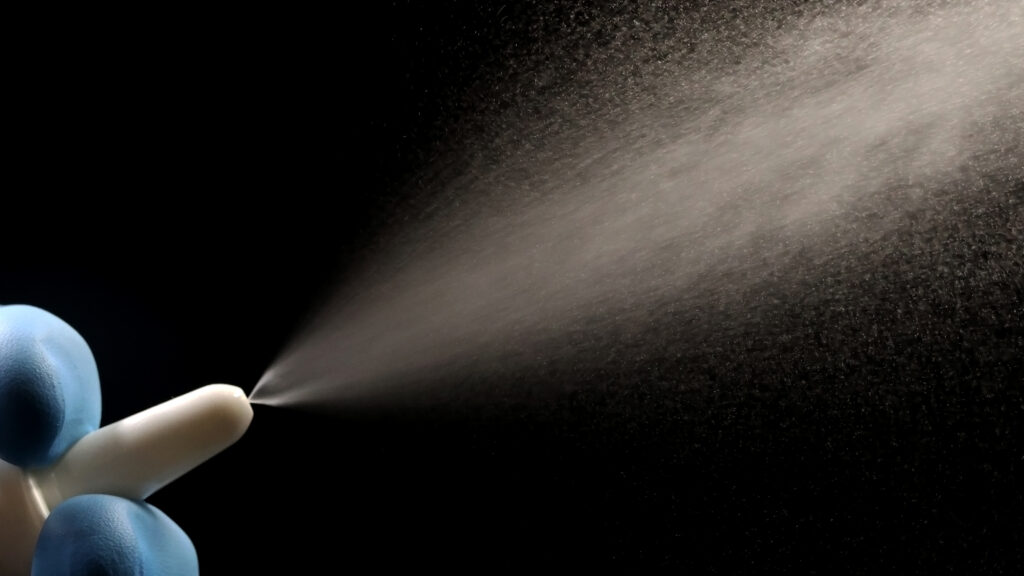My son Thomas has carried around a needle since he entered kindergarten at the age of 5. That was a big responsibility for a small child to carry an injector loaded with lifesaving epinephrine, but since he was 19 months old, he has worked with our entire family to manage his anaphylactic food allergies, asthma, and eosinophilic esophagitis.
We are not alone. In the U.S., more than 32 million suffer from food allergies: one in every 10 adults and one of every 13 children. Each year, 200,000 Americans require emergency medical care for allergic reactions to food; every three minutes, food allergies send someone to the emergency room. The U.S. Department of Agriculture estimates 2,000 hospitalizations and 150 deaths in the U.S. due to allergic reactions to food every year.
advertisement
It’s now 2023. My son is almost 21 years old, but little has changed for him and millions of people like him with life-threatening allergies. For more than 35 years, there has been very little advancement in treatments for this community; the same epinephrine needle that Thomas carried in his backpack to elementary school is still the top recommended approach to treating anaphylaxis. That could change, if only lawmakers and regulators would step up to their responsibilities and approved sublingual and intranasal treatments that can be inhaled like asthma medication.
Even though epinephrine is the only effective treatment for anaphylaxis, only 52% of food allergy patients have been prescribed auto-injectors, according to a 2022 study published in the Annals of Allergy, Asthma, & Immunology. It also found low ownership of the devices, even among those with a history of severe food allergy reactions. Reasons for this include costs, poor insurance coverage, and reluctance to use the devices due to poor understanding of how they work.
Even if injectable epinephrine is available, living every day in fear that a stranger might have to administer treatment with the needle is massively anxiety-provoking both for those with allergies and their families. The needle can be too daunting. One recent study found that more than half of parents (56 percent) are afraid to use auto-injectors on their children, while in the 2022 Annals of Allergy, Asthma, & Immunology study, 36% of adults said (incorrectly) that epinephrine auto-injectors cause life-threatening effects.
advertisement
A 2018 study found more than half who suffer from food allergies leave their injectors at home; as a result, 40% of study participants reported having a severe allergic reaction when their auto-injector was unavailable. Less than one in five patients feel confident using a needle, and many would rather risk allergic reaction than use the auto-injector. Even those with experience fear using the devices, and because of that, people — many of them children or teens — have lost their lives.
With alternatives available, no one should have to live in fear of needles, and no one should lose their life due to anaphylaxis. It is simply a question of making those alternatives — sublingual and intranasal epinephrine — available to those who need them, those whose lives could, at some point, very likely be saved by them.
Despite injectable epinephrine’s availability and de facto status as front-line treatment for anaphylaxis, it remains very much underused. A study found that only 57% of children with a history of food-induced anaphylaxis regularly carried an epinephrine device, while 84.7% carried epinephrine only occasionally. Another study found that 70% of pediatric victims of anaphylaxis experience improper treatment including the underuse of epinephrine injection.
Sublingual and intranasal treatments now exist for treating migraines, seizures, and opioid overdose. Yet people with allergies remain left behind. As the Allergy and Asthma Network said in a statement earlier this year, “seconds count when someone is experiencing anaphylaxis. … A needle-free epinephrine option will address an unmet need – and it’s needed sooner rather than later.”
It’s important to disclose that the Food Allergy and Anaphylaxis Connection Team, the group I lead, accepts sponsorship from the companies that make intranasal and sublingual epinephrine. But we accept support from many organizations that are also committed to helping people living with serious allergies. My peers in the allergy and immunology community identify this innovation as highest priority.
Earlier this year, the FDA had the opportunity to approve Neffy, a needle-free, low-dose intranasal epinephrine nasal spray developed by ARS Pharmaceuticals. Even though the agency had strong evidence of the product’s safety and efficacy, in a surprise move, regulators declined to clear the therapeutic for use. Instead, they requested completion of a pharmacokinetic/pharmacodynamic efficacy study assessing repeat doses of the drug, compared with repeat doses of an epinephrine injection project under allergen-induced allergic rhinitis conditions to support approval. I am aware of no independent expert who endorsed FDA’s request for additional information.
Without FDA approval, this drug will not come to market, and patients will continue to wait … and wait. The lack of progress in this space is incredibly frustrating. Regulators must act quickly, recognizing that addressing this unmet need is not a “good to have” for food allergy sufferers and their families. It is a “must have.”
Eleanor Garrow-Holding is a mother and the president and CEO of the Food Allergy and Anaphylaxis Connection Team (FAACT).

